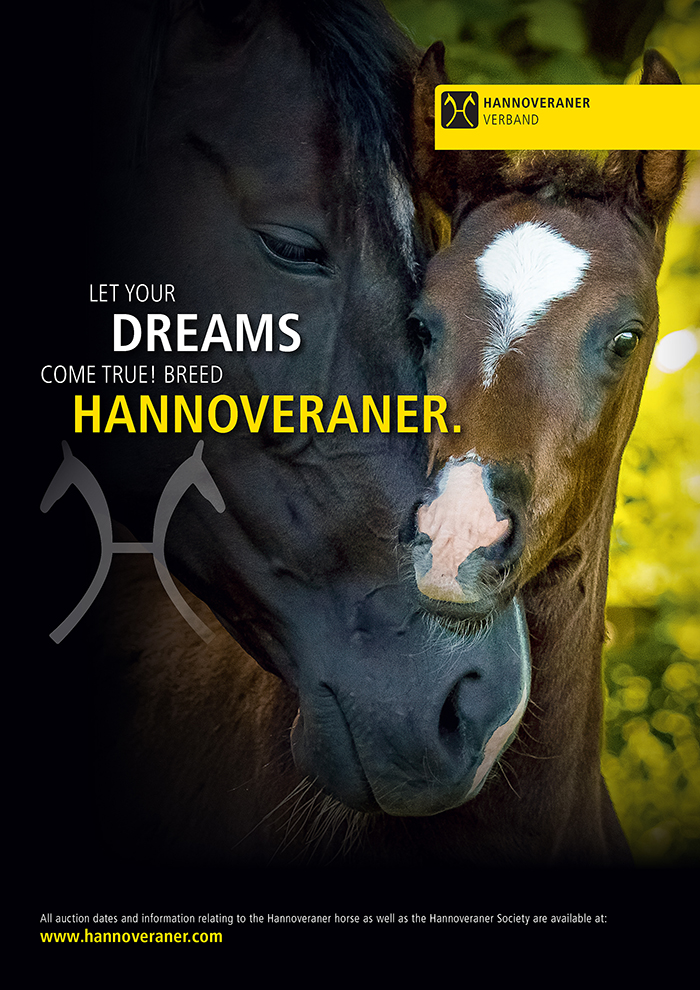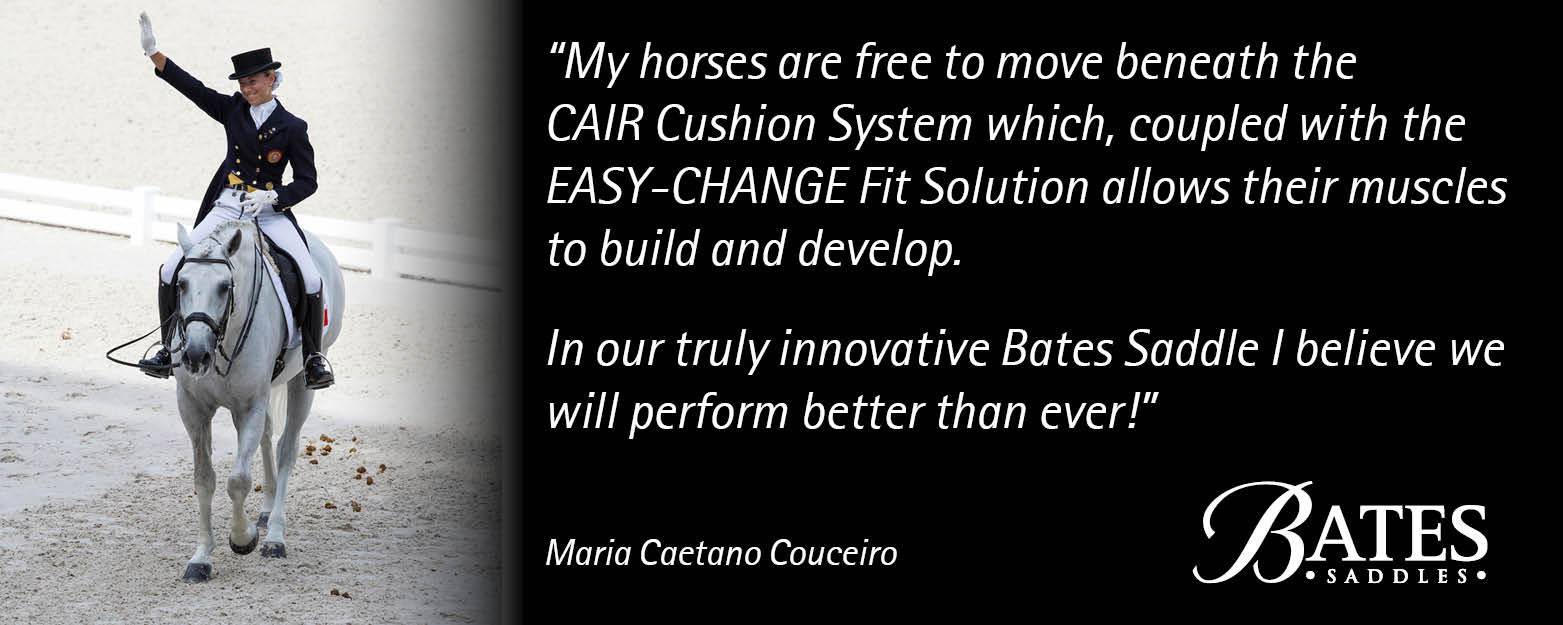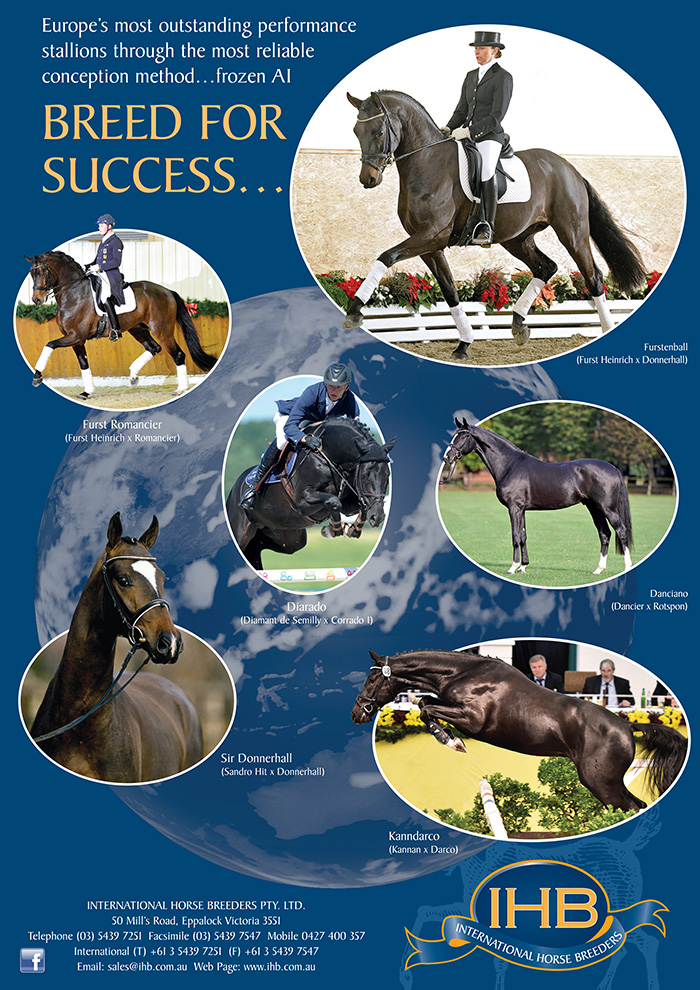by Angela McLeod – http://www.horsemagazine.com/thm/whos-who/mcleod-angela/
Just like people, horses come in all shapes and sizes and some are more naturally athletic than others. Pictures in this article are of four year olds being shown at the German Riding Horse Championships.
The ideal conformation is subjective and unmeasurable. However, when assessing a horse’s conformation, several criteria should be considered to determine the likelihood of the horse having a long and successful career in dressage, such as:
- Shape of croup and angles of the hind limbs
- Shape and length of back
- Attachment of neck to shoulder and direction it comes out of the shoulder
- Length and angle of shoulder
- Shape and length of neck
- Width of jaw
A horse of ideal conformation should be easy for an experienced rider to work the horse over the back. By this I mean the horse stretches the muscles of its topline, thereby raising its back; there is some tension in the abdominal muscles, and the hindlimbs swing actively under the point of gravity; in this way the thrust generated by the hindlimbs can travel uninterrupted to the contact with the rider’s hand at the mouth, enabling a secure connection, and communication between horse and rider, making the training of the horse a relatively straight forward matter. A horse with less ideal conformation requires a more sensitive and insightful approach to develop the required physique.

For dressage training to be correct and beneficial to the horse it must involve controlled gymnastics to strengthen the horse’s muscles gradually, enabling them to carry their skeleton in the desired ‘equestrian poise’.
The state of muscular development of the horse can give clues as to the state/ correctness of dressage training and also guide the trainer as to the appropriate exercises required to improve the weak areas of the horse’s conformation while taking advantage of its strongest assets.
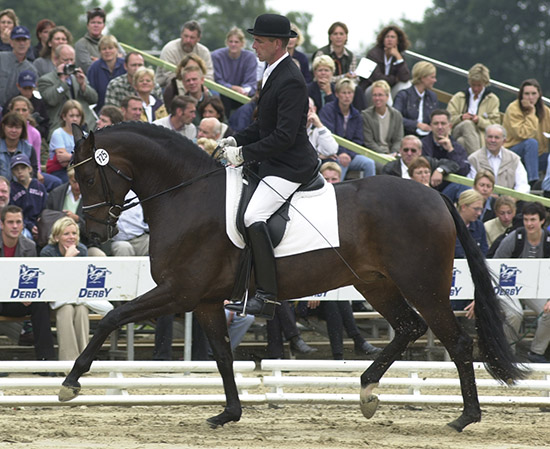
Incorrect musculature can only be improved by planned, patient exercises. This may require months of simple trot exercises for horses that have stiff necks, tense backs or high hindquarters. As these exercises gradually improve the horse’s balance, he will start to appear more poised. The contact with the bit will become soft and consistent, and the rhythm will remain regular in all movements.
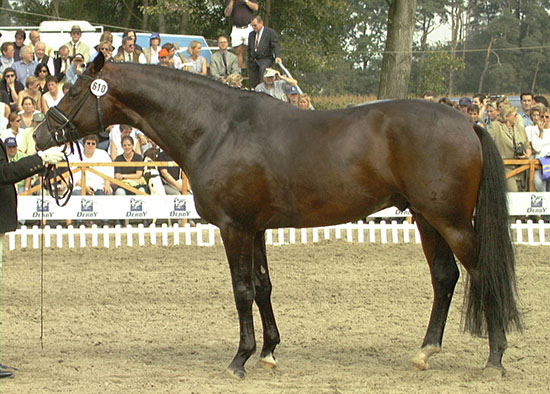
The more correctly and patiently the work is done, the more the irregularities of conformation in a green horse will disappear. An awkward horse can transformed into a supple, poised and consequently more valuable one.
next the hindquarters
The Hindquarters
Everything comes from behind so correct action of the hindquarters is the key to the essential strengthening the back, so as long as the hindquarters can do their job, the back will stretch and the horse will seek contact with the bit, develop stronger neck muscles and become supple.
If the hindquarters are weak they are unable to develop strongly bent haunches with sufficient thrust, therefore the hindquarters must be strengthened before the horse can maintain a consistent contact, enabling the rider to reliably act on the hindquarters through the connection.
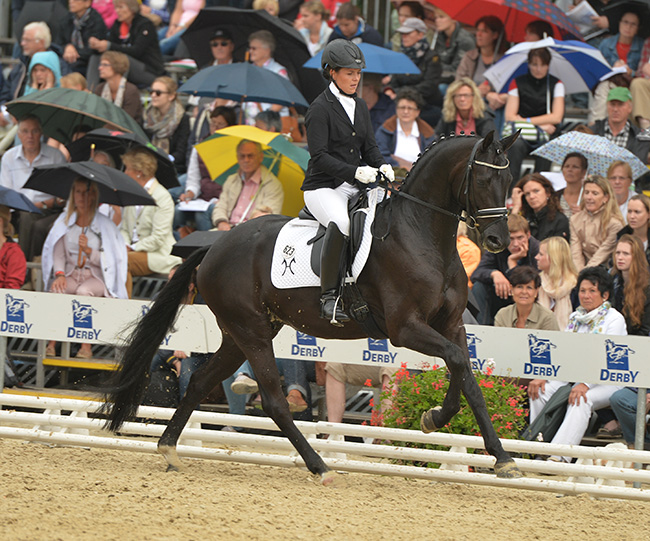
Horses with weak hindquarters will benefit from the following exercises – all exercises to make the haunches bend
- Turn on the haunches
- Rein back to trot
- Shoulder in
- Repeated canter strike offs
- Long steady canters
- Climbing hills
These will make the hindquarters stronger and more flexible so that they can take more of the load off the forehand.
Bending the haunches is hard work for the horse. The easiest way for the horse to evade this is to go crooked. When this happens, the rider must ride forwards and straighten him before resuming attempts at more collected work.
Like people, all horses, even highly trained ones will always be naturally one sided, like being right or left-handed. During every session the rider will have to work through this in the warm up until the horse is straight and on the aids, working over the back into an even contact.
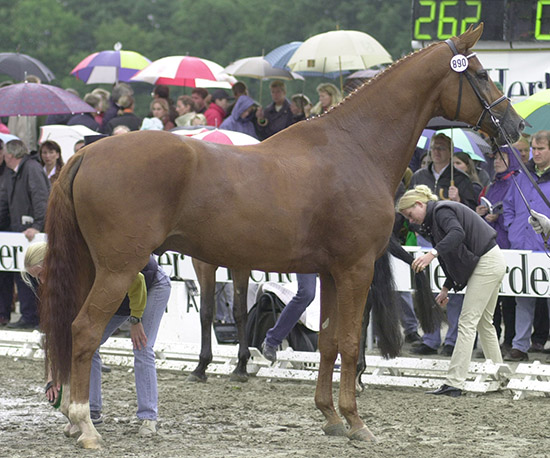
For the horse to work over the back, the back muscle needs to be strong and supple to react to the working together of the levers at each end of its frame – the neck and the hindquarters (pelvis and haunches)
For a horse to work over the back, it is also necessary to achieve physical and mental ‘losgelassenheit’ – relaxation and suppleness. Only then can you have elasticity from poll to croup
A horse with good proportions finds this losgelassenheit naturally a lot easier to achieve.

THE BACK
A short, tight back –
This will need to be loosened up with big, forward movements and a forward directed head. Remaining in a steady tempo, the rider should try to achieve the longest possible steps and encourage the longest possible top line. Riding in a forward and downwards stretching position is very important for these horses to avoid premature wearing out of their limbs. A varied programme including the use of poles and hill work will help to make them more elastic and easier to stretch. The rider must be careful when performing collected work, and after a short session of collected work, to ride the horse strongly forwards again. It is important to try to always keep the horses jaw angle open and head in front of the vertical.
Horses with excessively long backs –
This is also a problem, especially when the hind limbs trail out behind. It is best to ride these horses in the forwards, downwards, stretching frame until their back is strong enough. Next, lateral work in walk, and then later in trot can improve their ability to step under their centre of gravity and bend their haunches. These horses benefit from frequent rides in open country moving away from home in the pace they find easiest, and towards home in the pace that needs the most work.
Intervals of dressage training should be short, with frequent walk breaks. The rider should take note of how the horse sweats. Dry patches indicate areas lactic acid build up indicating the muscles that are under pressure.
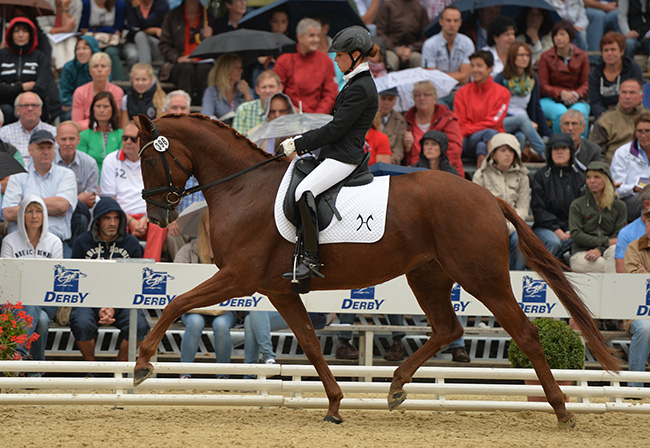
Croup high horses –
These horses should be warmed up in the pace they find the easiest, to avoid excessive stress to their knees. They should have short periods of work with many walk breaks, or they will tend to lean on the rider’s hand. Cavaletti training and hill work as well as extensive walk work, such as turn on the haunches, will encourage these horses to take more weight behind.
Sunken, hollow back –
These horses are especially difficult. The rider needs to improve the flexibility and mobility of the back (lateral work and transitions) A lot of conditioning work, up and down hills is necessary. It is especially dangerous to ride these horses in false collection, which can make the back more hollow. The forwards, downwards, stretching posture is extremely important in these cases. The horse must let his neck fall and start chewing. The rider should take up a light seat to relieve the back, and make sure the horse remains in front of the leg.
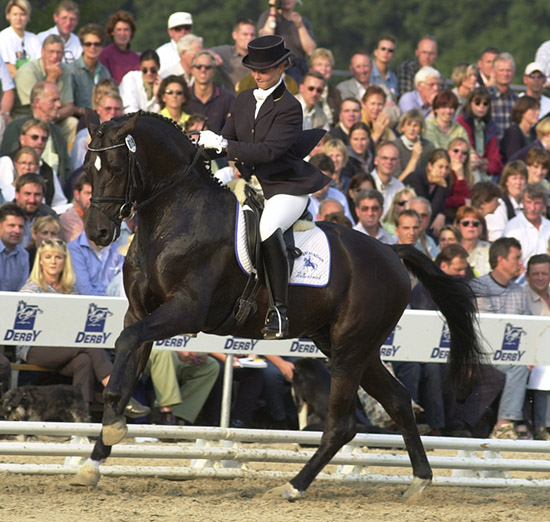
THE NECK
Once the hindquarters are sufficiently developed, the neck is the lever with which it is possible to load the weight bearing onto the hindquarters and lighten the forehand.
In a well-conformed neck, the muscles at the top are very evident and those and the bottom less so.
Necks that are too long, thin, or excessively bent are too mobile, and make it difficult to obtain the necessary comfortable, secure contact with the bit.
If the neck is set on too deep, and extends forward from the withers rather than up, elevation is more difficult. However, through the above strengthening training the hindquarters gradually lower and it is possible to develop a neck similar to a normal neck so this is not a great problem
Apart from truly faulty hindquarters, the upside down (ewe) neck, creates the biggest challenge for the rider. It is usually impossible to obtain the correct head position required for the reliable action of the bit.
However, beware because thin, green, horses which have lost all the fat in their crest, and have a hollow in front of the withers, can give the false impression of having a ewe neck. In the same way, very fat horses can appear to have a well conformed neck, when in fact this isn’t the case.
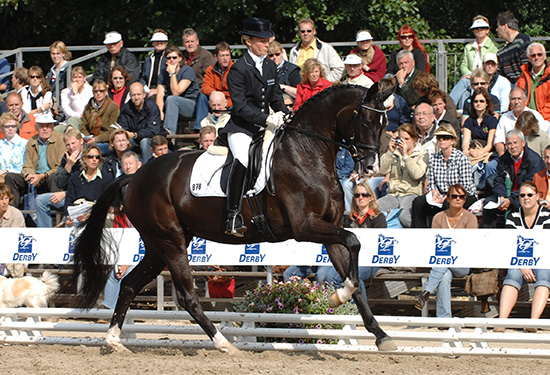
“The quality of the neck essentially depends on the carriage of the cervical vertebrae and their connection with the head and torso. The rider will discover this with certainty only when working the horse.” The Gymnasium of the Horse, Gustav Steinbrecht
Unsteady or shaky necks can be a consequence of disproportionate length, fineness, flexibility or of weak muscles. They make the development of thoroughness and the establishment of a reliable contact very difficult. It is usually necessary to perform long exercises at deliberate gaits until the rider is able to act reliably on the hindquarters by collecting the horse. If the horse has strong, well conformed hindquarters it is possible to correct this neck. The forehand is elevated by bending the haunches and the correctly developed thrust always takes care of the correct contact with the reins. This requires a light fine hand and a prompt leg aid.
To attain reliable steadiness in the contact such necks must be completely reshaped in the course of training by strengthening and developing the muscles. Correct work gives the neck a certain elevated shape, with an elegant, even, bend; the width and thickness being greatest at the shoulders from where it tapers steadily towards the poll.
The more the neck gains in steadiness, the greater its width towards the bottom. Horses that naturally have such a neck have one of the greatest advantages for a dressage horse.
Going behind the bit
Draw reins are popular gadgets used by many riders, as they appear to put horses with stiff/ upside down necks, on the bit. They have the superficial appearance of working through the back but in actual fact these horses are behind the bit and escaping the rein aid.
“Such a trained in or forcibly obtained behind-the-bit carriage is very different from an innate behind-the-bit carriage due to faulty conformation… it is possible to counteract such a conformation fault with the unweakened forces of the hindquarters and an unspoiled character… in the case of the former, initially we need to attempt to regain the natural state through suitable exercises – to revive the suppressed or robbed thrust.” Steinbrecht
The poll/angle of the jaw
How much space the horse has at the jowl for its parotid gland determines whether the horse can flex at the poll to let the head hang at the vertical. When the space is narrow, problems may be encountered in high level dressage when the neck is very elevated. Such horses should be ridden forward to the bit, with lots of bending exercises to promote chewing. In forwards, downwards work they should not be ridden too deep, or they become heavy on the forehand. It is often not possible to further dressage training very much. It depends on the individual horse.
Summary
In conclusion the ease of training for dressage and the best exercises to achieve this depends on the individual conformational traits of your horse. As mentioned previously, regardless of conformation, all horses must be ridden over the back.
Such a horse keeps the same tempo on voltes, also when lengthening and shortening the stride he remains in the same rhythm. He allows himself to be ridden in a stretching frame, his breathing is deep and regular, his tail swings like a pendulum and he snorts occasionally.
There seems to be a lot of controversy about the benefits of riding a horse in a stretching posture, with some people insisting it is deleterious to the horse’s health and only results in putting him on the forehand. It must be remembered, however, that the purpose of training is to gradually teach the horse to take more weight behind, and this is only possible when he can keep his back raised for extended periods of time. This is why young horses and horses in the early stages of warming up must first be allowed to stretch over the topline, and also after periods of collection, be allowed to chew the reins out of the rider’s hands. As Dutch team trainer Rien van der Schaft says; the direction of the contact must always be forwards and down, so when the horse is offered more length of rein, this is the way his head should tend to go. This is a sign that your training is going in the right direction.
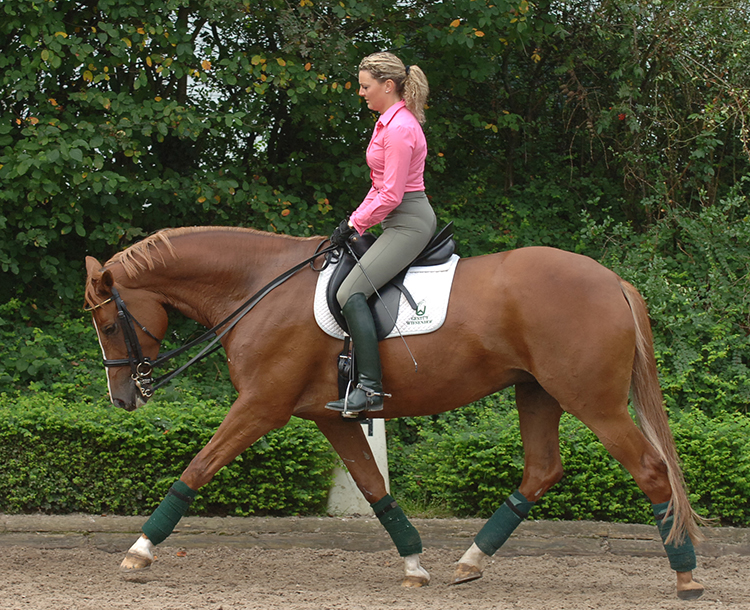
This applies right through the training process



